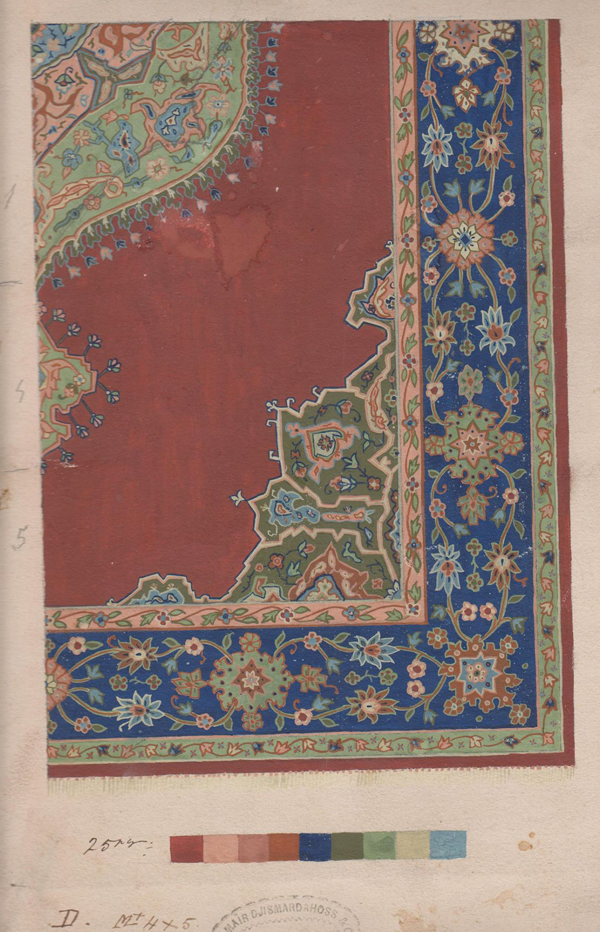
The Interviewees
Herve Georgelin | Pelin Böke | Alex Baltazzi | Axel Corlu | Philip Mansel | Antony Wynn | Fortunato Maresia | Vjeran Kursar | Christine Lindner | Frank Castiglione | Clifford Endres | Zeynep Cebeci Suvari | Sadık Uşaklıgil | İlhan Pınar | Ümit Eser | Bugra Poyraz | Oğuz Aydemir

Interview with Sadık Uşaklıgil, January 2016 - Türkçe
1- In many parts of Turkey, Turkmens know how to weave carpets and kilims, but early on Uşak rises to prominence in terms of this commercial sector. What are the reasons behind this?
Uşak is a region Turkmen groups began settling in numbers from the 13th century onwards. These are also termed ‘yörük’. Initially they maintained their migratory life-style between supper higlands and winter quarters but with the forceful encouragement of the Seljuk rulers the majority settled in their nearby villages and towns. At the time Uşak was a mostly abandoned ancient Frigian town formerly known as ‘Themenothrai’. In museums there are fragments of carpets from the 15th century that are proven to be weaved in Uşak. With the vigorous rise of the Ottoman Empire during the 16th century Uşak carpet weaving enters its most important and classic period. The palace from its ‘Nakkaşhane’ designers create a stream of orders for the newly built mosques, palaces and residences. A major part of these commissions were of carpets of large size. Since such carpets required correspondingly large weaving frames, they were beyond the capability of the migratory Turkmens. The town of Uşak was found to be very suitable for this task and these carpets were admired not just by the Ottoman court and elite but by foreign aristocrats and their legacy is reflected in these valuable specimens displayed today in museums around the world and some were featured in Renaisance painters of the time and thus are partly classified according to those artists ‘Holbein, Bellini, Lotto, with medallion, with stars ve with birds’.
2- When carpet weave workshops were established in Uşak to what extent did the designs stay loyal to the traditional local designs? As export numbers increased was quality compromised?
Firstly the 16th century carpets were of large dimension and for this reason it was natural for them to have different designs to the traditional weaves and the Ottoman court reflected a higher level of sophistication compared to the nomads. There were however some minor design elements that carried through. The ‘Nakkaşhane’ I mentioned earlier post Sultan Selim the Grim’s successful war with the Safavids in the 1520s, was full of Azeri designers brought from Cairo & Tabriz. Naturally these nakkaşs had different styles. However because the weavers in Uşak interpreted the designs in their own style what resulted in first glance can be termed ‘original Uşak’. Till the end of the 18th century there is no alteration of this high quality, but from the 1850s when the middle class in Europe began buying these carpets with increasing volume, the thread was thickened and the knot density was reduced. The Europeans introduced to the Uşak weaving sector in the 1860s the synthetic dyes of analin and later alizarin. We see more than 10 European operated dye-houses in Uşak established from this date which would then commission carpets from this dyed thread. Naturally these synthetic pigments could not replicate the delicate beauty of natural dyes, however colour consistency would be maintained and also there was a huge increase in the colour pallet of the carpets now being produced. It was important for this colour tonal consistency for orders taken in Europe and the final delivered product. Plant extracted dies couldn’t provide this reliability or range.
3- The oldest Levantine company to set up shop carpet weaving in Uşak was ‘Cardinal & Harford’ a Levantine family from Smyrna who started in this trade when a London based company decides to leave the carpet trade and offers to sell them the business. How was it a family with no prior experience in this sector could achieve success in such a short period?
In earlier times Europeans through their local intermediaries would buy up the ready-made existing stock in the Uşak market. According to my research Cardinal & Harford was the first European firm to commission carpets according to their own designs and custom colours. In 1792 the company was bought by a Smyrna Levantine firm and start to operate their own carpet weaving centres in Uşak, Kula, Demirci and Gördes. The designs were clearly taken from different Turkish and Eastern carpets but were able to incorporate these to the quality in Uşak, adding many colours to it, and thus making them appealing to the European middle class which at the time was growing in prosperity. The 16-18th century Uşak classical period carpets were thin and long with no size standard applied. This company brought in European size standards to their production: 8’x10’; 9’x12’; 10’x14’. They introduced new colour tones that didn’t really exist in the old Uşak carpets, beiges, light greens, different brown tones and lilac. They were able to get the locals accept their English manner of trade practices. For example each colour, each order having a code number and being tracked by that number and precise following of the carpet dimensions.
4- How long was Cardinal & Harford able to maintain a monopoly in this field and when did rival Levantine firms set their own workings in Uşak?
They weren’t able to maintain this monopoly for long, however as Cardinal & Harford they stayed in operation for about 30 years.
5- When did Cardinal & Harford pull out from the carpet trade and do we know when the family left Turkey?
Unfortunately I don’t know when C&H closed shop nor what happened to the family.
6- With the union of the carpet firms under OCM in 1908 presumably the production and export becomes more efficient under this holding? Was there scope for small producers to carry on trade next to this monopoly?
No, the purpose of setting up OCM was to eliminate all rivals, whether Turkish or European. And in this aim they were largely successful. They took control of each stage of carpet production. They collected the wool from Anatolia themselves, in their factories they spun it to thread and in their own dye-houses they coloured them. They gave this thread in debt to the weavers, buying those carpets at an agreed price, subtracting the amount they were owed. In this way they would get a profit at each stage of the manufacture. The result was their manufacturing costs were 30-40% cheaper than their rivals. If a new selling rival emerged in Europe or America they quickly lowered their prices to drive-off the new-comer. By 1918 they had captured 80% of the Eastern Anatolia & Iran carpet trade.
7- Did Levantines families live in Uşak? Did they build their own houses, schools etc.?
There was a Christian minority in Uşak but the Levantines lived there for a short period. Some of these Levantines were managers of the local branch of the Ottoman Bank and some were technicians who operated the dye-houses belonging to the Levantine firms. The locals of Uşak learnt how to use synthetic dyes from these specialists. The number of resident Levantines varied with time but I estimate it didn’t exceed 8-10 families, around 30 people. There was a French School in Uşak but it was more geared towards a Catholic mission aimed at the local Christians. The aim was to train personel for their railway line that ran from Smyrna.
8- Was there a migration into Uşak from the surrounding landscape as a result of increasing prosperity brought on by the carpet trade? Were the locals of Uşak able to expand trade overseas, to Europe?
It is obvious that the carpet industry brought prosperity to Uşak. With the arrival of the railways to the town thread factories are established in Uşak. Other industries also develop at this date. This leads to an internal migration from surrounding villages. The locals of Uşak tried many times to widen their trade abroad but the tough competition of OCM wouldn’t allow it.
9- With the withdrawal of the occupying Greek forces of 1922, the subsequent fires both in this city and Smyrna, the emigration of most Levantines leads to a collapse of the carpet trade of Uşak and the export chanels are curtailed. Do you think the newly established Republican government spent enough effort to re-start this trade?
The exodus of the Levantines of Smyrna brought all of the carpet trade of Western Anatolia almost to the point of elimination. This was because the distribution network had collapsed. All of Turkey was razed and ravaged and no local had any capital. The newly established Turkish state took some minor steps but to no avail. However OCM did maintain an office in Izmir till the 1950s but they didn’t attempt to create a large concern like in the past. OCM like other carpet traders of Europe were now not keen on dealing with Turkey, and turned to new sources that were less risky and cheaper such as Iran and India. When I visited OCM in London in 1990 their still very large shop stock consisted of 95% India, Tibet and China manufacture, the remainder 5% was from Iran and Turkey.
10- In terms of Uşak and carpet manufacture do you think there are aspects still awaiting study?
Throughout the 19th century, export-wise, outside the agricultural exports of the Ottoman state, consisting of cotton, tobacco, figs and raisins, Uşak carpets formed the biggest component. For this reason this commodity carries a particular importance for the Ottoman economic history during the 19th and early 20th century. This realm needs to be studied in its different facets in depth.
Interview conducted by Craig Encer
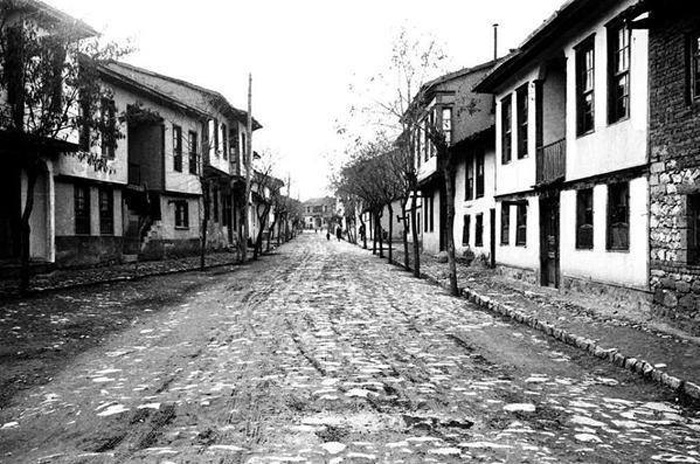
A street in old Uşak where each house would have had one or more carpet weave looms.
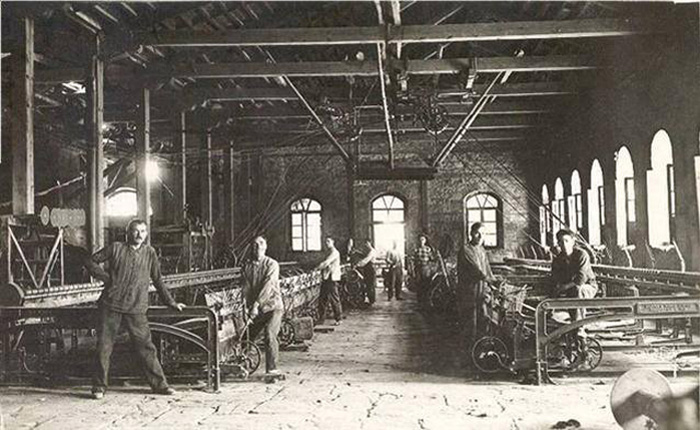
A carpet thread factory in Uşak, 1910.
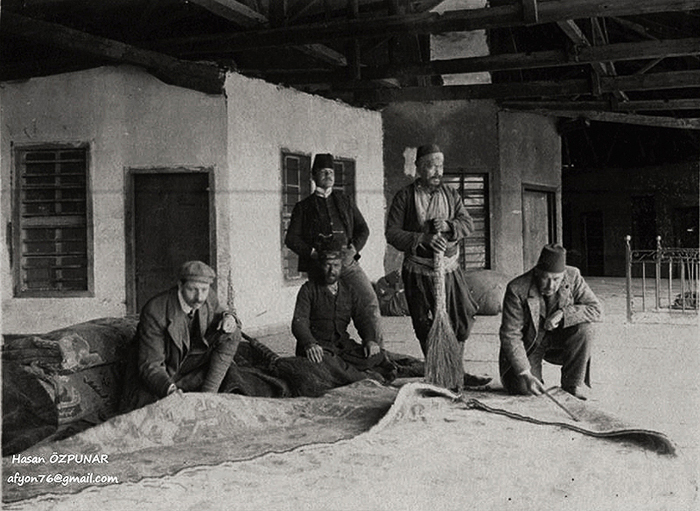
A Levantine selecting carpets in Uşak at the beginning of the 20th century.
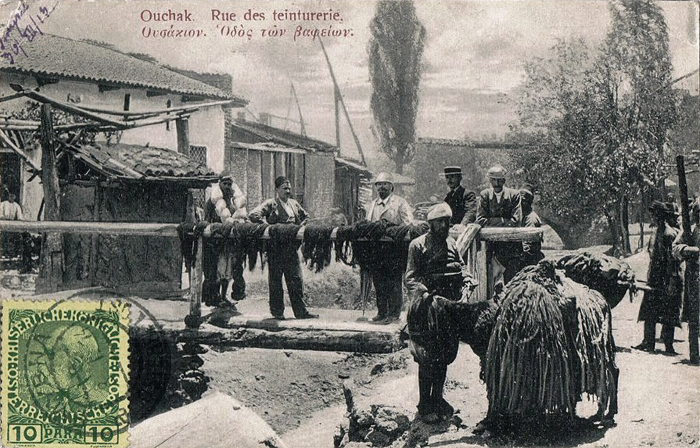
A Levantine run yarn dye-works in Uşak.
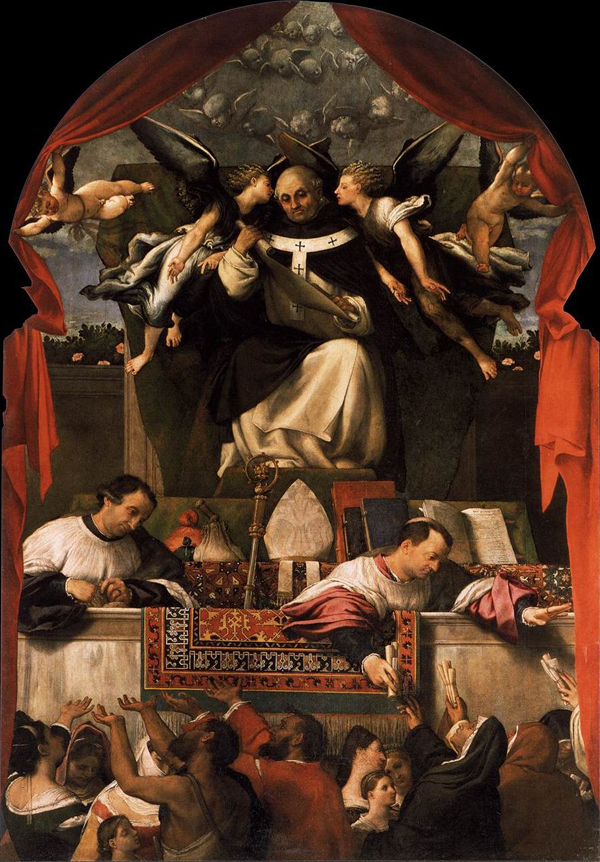
Lorenzo Lotto, ‘The Alms of St. Antonio’, (1542) a Lotto Uşak carpet depicted.
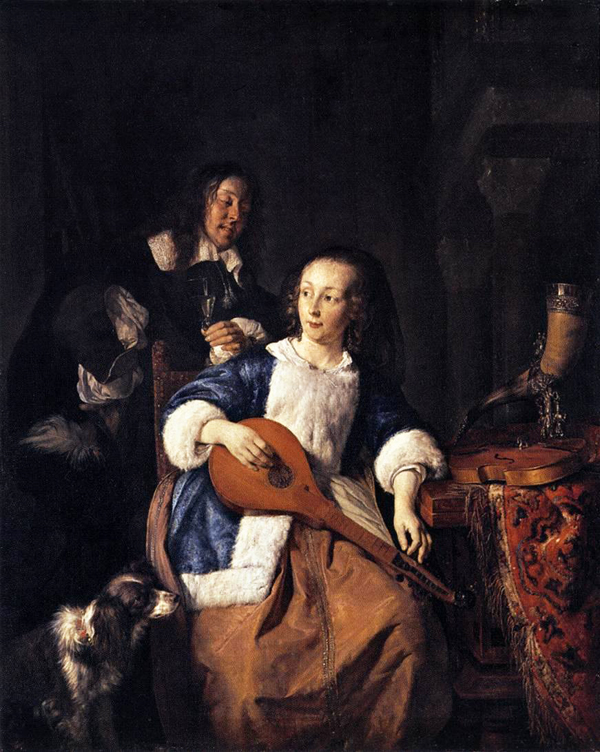
Gabriel Metsu, Madallion Uşak carpet depicted.
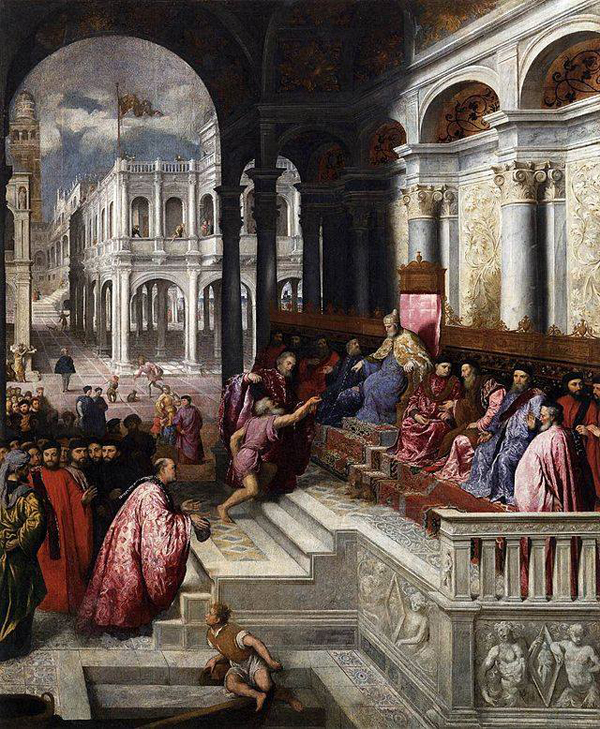
Paris Bordone, ‘The Fisherman Presenting the Ring to Doge Gradenigo’ (1534), beneath the Venetian Dogue’s thrown a Starred Uşak carpet depicted.
